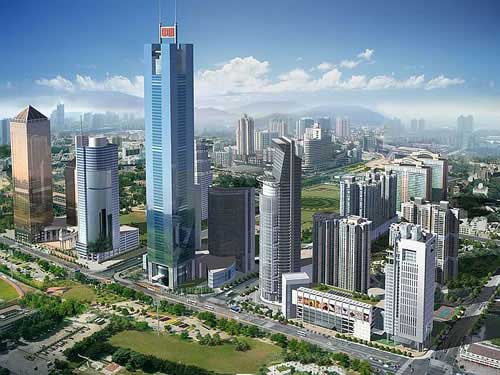
 |
| Guangzhou [cctsbeijing.com] |
Guangzhou, Guangdong Province
Urbanization quality index: 0.6484
Urbanization rate: 83.8%, No. 12 among Chinese cities
As the world's second largest economy, China's urbanization has worldwide implications. Nobel-winning economist Joseph Eugene Stiglitz has once named urbanization in China and high-tech development in the United States as the two primary factors shaping the world of the 21st century.
Since China began to undertake the major task of transforming its growth pattern years ago, an urbanization spree has been well underway. Its urbanization rate had reached a global average of 52.57 percent by the end of 2012, meaning that more people are now living in China's cities than in its countryside.
However, over the past years, urbanization rate has been worshipped as the sole criterion for measuring urbanization levels, whereas the quality of the whole process has mostly been neglected. Failing to keep in sync with economic development, industrialization, resources and environment sustainability, as well as employment, blind urbanization has brought along with it various problems.
Wei Houkai, deputy director of the Institute for Urban and Environmental Studies (IUES) under the Chinese Academy of Social Sciences, described China's current urbanization as being too fast, of low quality and unbalanced.
In a bid to address the issue, the government has explicitly stated in a report delivered to last year's 18th National Congress of the Communist Party of China that the quality of urbanization should be improved noticeably.
"We should stick to the Chinese-style path of carrying out industrialization in a new way and advancing IT application, urbanization and agricultural modernization. We should promote the integration of IT application and industrialization, interaction between industrialization and urbanization, and coordination between urbanization and agricultural modernization, thus promoting a harmonized development of industrialization, IT application, urbanization and agricultural modernization," the report reads.
In order to gain a clear picture of how urbanization is progressing in most Chinese cities, China Economic Weekly and IUES Tuesday jointly launched a report entitled China's Urbanization Quality after conducting extensive research and surveys.
The report, the first of its kind, provided a systematic and comprehensive evaluation of the urbanization process in 286 Chinese prefecture-level and above cities as a way to explore strategies and measures to upgrade the nation's overall urbanization level. Statistics used for this research is taken from official documents for the year 2010.
Another highlight of the report is an overall ranking of the urbanization quality in the country's prefecture-level and above cities. Researchers employed the three main indicators of urban development quality, urbanization efficiency and urban-rural balance, alongside a set of sub-indicators in compiling the ranking.
A high urbanization rate, a key indicator of the country's urbanization level, does not necessarily ensure high urbanization quality, the ranking suggested. Instead, cities will attain a higher position in the quality ranking when they perform well in per-capita GDP, per-capita disposable income, per-capita fiscal revenue, development of non-agricultural economy, Engel's Coefficient, SO2 emission for unit GDP, as well as the urban and rural income gap.
It has also been found that economically developed cities in eastern China have done a better job in pursuing urbanization quality than their less developed northeastern, central and western counterparts, scoring quality indexes of 0.5419, 0.4860, 0.4632, and 0.464 respectively.
Population size is another factor affecting urbanization quality. By grouping cities according to their population, the report found that the larger the cities, the more scientific their urbanization, as larger cities possess more resources for urban construction and economic and social development.

















 Photo story: Brave young mother in the 4th year of university
Photo story: Brave young mother in the 4th year of university


![]()
